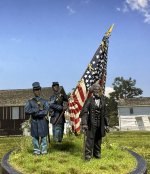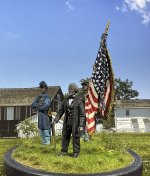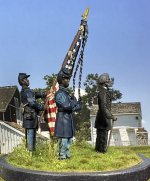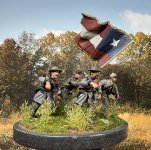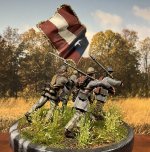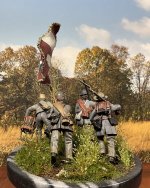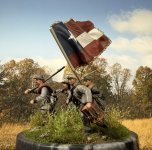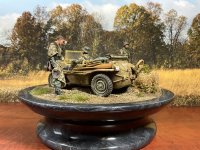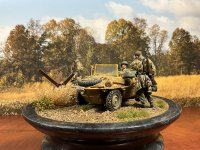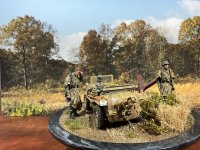WBritain
Master Sergeant
- Joined
- Oct 20, 2005
- Messages
- 1,332
This small pedestal base diorama features Frederick Douglass, abolitionist, orator, writer and statesman, possibly one of the most important leaders for African-American civil rights in the 19th century. Also featured in this display is Frederick’s son Lewis Henry Douglass who became the Sergeant Major of the 54th Massachusetts Volunteer Infantry. Carrying the National Color is Medal of Honor winner Willam Carney. Sergeant Carney took part in the assault on Fort Wagner in Charleston, South Carolina on July 18. 1863. He took up the flag after the color guard was killed and carried it forward despite serious wounds, and when he returned from the failed assault he said that the flag never touched the ground.
All three of these figures are currently in-stock.
10085 Frederick Douglass Abolitionist and Social Reformer
10086 Lewis Douglass Sergeant Major 54th Massachusetts Volunteer Infantry
10096 William Carney Sergeant 54th Massachusetts Volunteer Infantry
All three of these figures are currently in-stock.
10085 Frederick Douglass Abolitionist and Social Reformer
10086 Lewis Douglass Sergeant Major 54th Massachusetts Volunteer Infantry
10096 William Carney Sergeant 54th Massachusetts Volunteer Infantry


